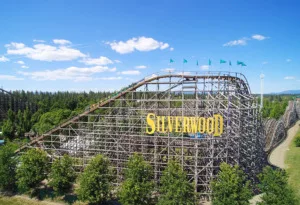City to put $9.9 million toward pedestrian-related projects
Sidewalk improvements, traffic-calming work set
The city of Spokane is planning about $9.9 million in sidewalk and traffic-calming projects throughout the city this year, says Marlene Feist, Spokane’s director of public works.
Seven sidewalk projects are valued at $6.3 million and about a dozen traffic-calming projects, which entail installing or constructing speed-reducing mechanisms such as stop signs or traffic circles, are valued at $3.6 million.
Several of the larger projects are in the northeast quadrant of the city. Among them, Spokane-based Bacon Concrete Inc. is the contractor for the $1 million Greene and Carlisle sidewalk and hybrid beacon project, says Feist. A hybrid pedestrian beacon project is a pedestrian-activated stoplight at a crosswalk with safety features including crosswalk markings and signage, added illumination, and audible signals.
The project, which is located along a four-block stretch of Carlisle Avenue between Greene and Freya streets, is expected to begin later this year.
Halme Construction Inc. will install a hybrid beacon crosswalk at the Nevada Street-Joseph Avenue intersection in the Nevada-Lidgerwood neighborhood, says Feist.
Halme is also the contractor for a sidewalk installation on north Liberty Avenue, near Bemiss Elementary School. The two projects are valued at a total of about $750,000. Construction is expected to start in spring and be completed by summer.
Other pedestrian-related projects are expected to go out to bid in the first half of this year. They include the $1.3 million Garland Pathway project along the north side of East Garland Avenue from Cook Street to Market Street.
“Trail systems like the Garland Pathway have been really popular as we try to build out these networks... so people can go where they need to go,” says Feist.
Hybrid beacon installations valued at a total of $1 million are planned along north Division Street at Everett, Longfellow, and Weile avenues.
In northwest Spokane, sidewalk improvements valued at $1.5 million are planned along Driscoll Boulevard and Alberta and Cochran streets.
Funding for traffic-calming projects, which include installing stop signs, speed bumps, or traffic circles, comes from revenue generated by tickets issued for red-light and school-zone traffic infractions. The city works with neighborhoods to identify where traffic calming projects are needed.
The hybrid beacon projects along Division are funded through a mix of local levy money, real estate excise dollars, and a Highway Safety Improvement Program grant. Sidewalk improvements on Liberty Avenue are funded in part by a state-sponsored Safe Routes to School grant, says Feist.
Related Articles
Related Products


_c.webp?t=1763626051)


